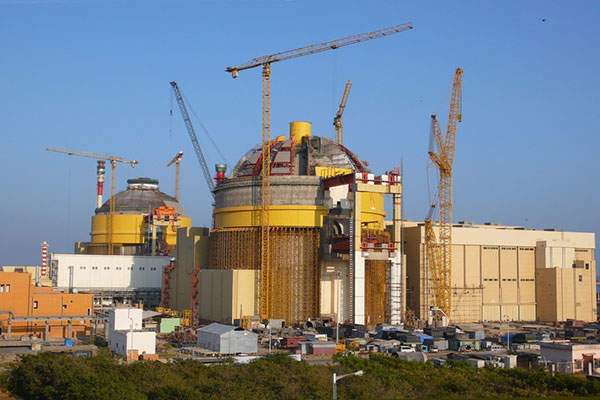The Kudankulam Nuclear Power Project (KKNPP), operating 2×1,000 MW pressurised water reactors built with Russian know-how, has completed 90% excavation of the site for commencing construction of its fifth and sixth reactors.
“As the excavation is progressing ahead of its schedule, the much-awaited pouring of concrete for the fifth and sixth reactors will happen in June 2020,” highly-placed sources in the KKNPP told.
Overcoming glitches
Though technical glitches in the allied units of the first and second reactors of KKNPP, especially in the turbine section, hamper power generation frequently, the KKNPP engineers, tiding over these issues, are focussing more on expediting construction of the remaining four reactors, as the site is meant to house six 1,000 MW reactors to make it a ‘Nuclear Park’.
Armed with knowledge and experience that they gained during the site excavation for the first four reactors, the KKNPP team has completed more than 90% of the digging at the site, in record time. Hence, the site will be ready by June 2020 for the “first pouring of concrete” (raft concrete), that will mark the actual construction of the reactor.
Meanwhile, KKNPP has completed 32% construction work in its third and fourth reactors, for which the “first pouring of concrete” was conducted on June 29, 2017, after excavation of earth for the two reactors were completed in a record time of eight months, after the commencement of the exercise in February 2016.
While the third reactor is expected to attain criticality in March 2023, the fourth reactor will be connected to the Southern Grid on generating power a year later.
“We’ve completed over 32% of construction on the third and fourth reactors, each with a capacity of 1,000 MW, being built on an outlay of over ₹39,747 crore, with Russian assistance,” a source said.
Supplanting water
Instead of using water in the concrete mixture, ice flakes are being used to bring down the heat that usually gets generated when cement, sand and blue metal are mixed in the right proportion. Since the temperature is reduced to 19 degrees Celsius, there will not be any crack in the construction.
NPCIL had taken adequate measures for getting the components from Russia for the construction of the third and fourth reactors on time. Under the “Make In India” programme, the NPCIL has planned to increase localisation.
In other words, the third and fourth reactors will have 30% domestically fabricated components, while the fifth and sixth reactors will have an additional 20% components of Indian origin, to ensure hefty savings for project proponent NPCIL.
Source: The Hindu
Image Courtesy:Power Technology
You may also like
-
Dot Simplifies Approval Processes For Telecom Licenses And Wireless Equipment
-
PM to Inaugurate SEMICON India 2024 on 11th September
-
Shri Piyush Goyal Sets 500 Million Tonnes Domestic Steel Production Target by 2034
-
NHAI to Track Around 100 Toll Plazas with GIS-Based Software for Seamless Movement of Traffic at National Highways
-
“Marching Towards Building A Digitally Connected Bharat and An Atmanirbhar Telecom Sector”: Union Minister Jyotiraditya Scindia
